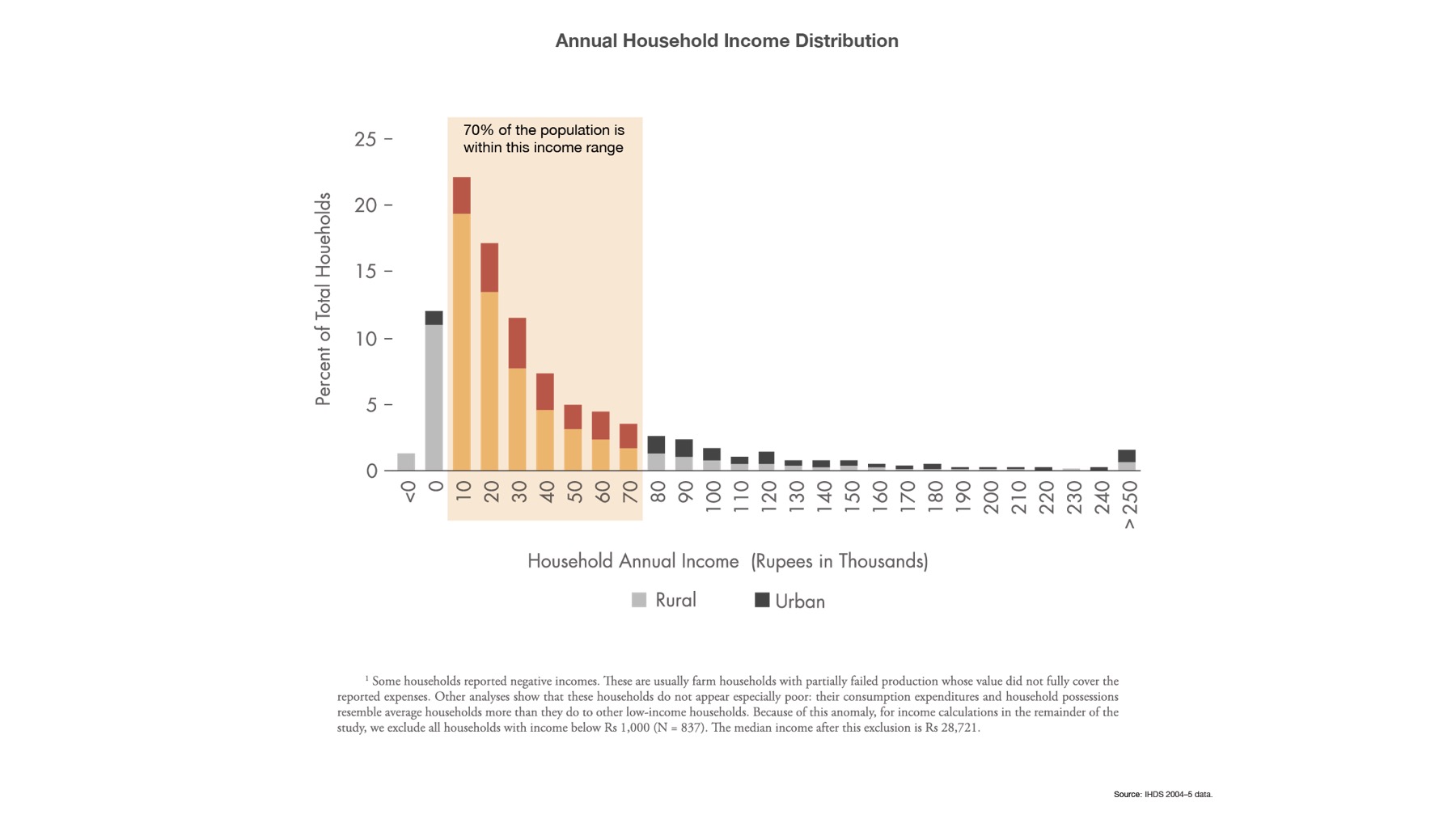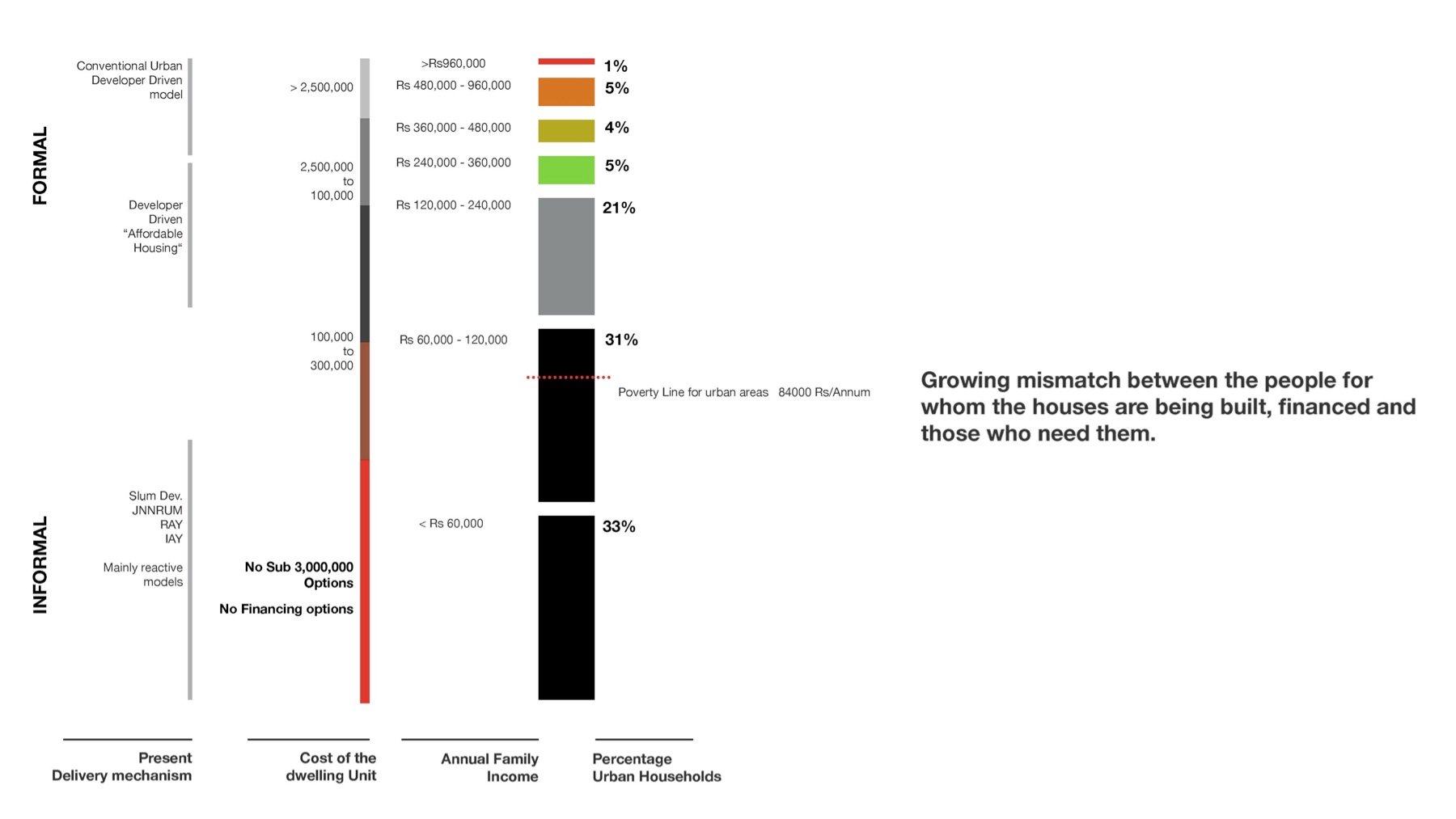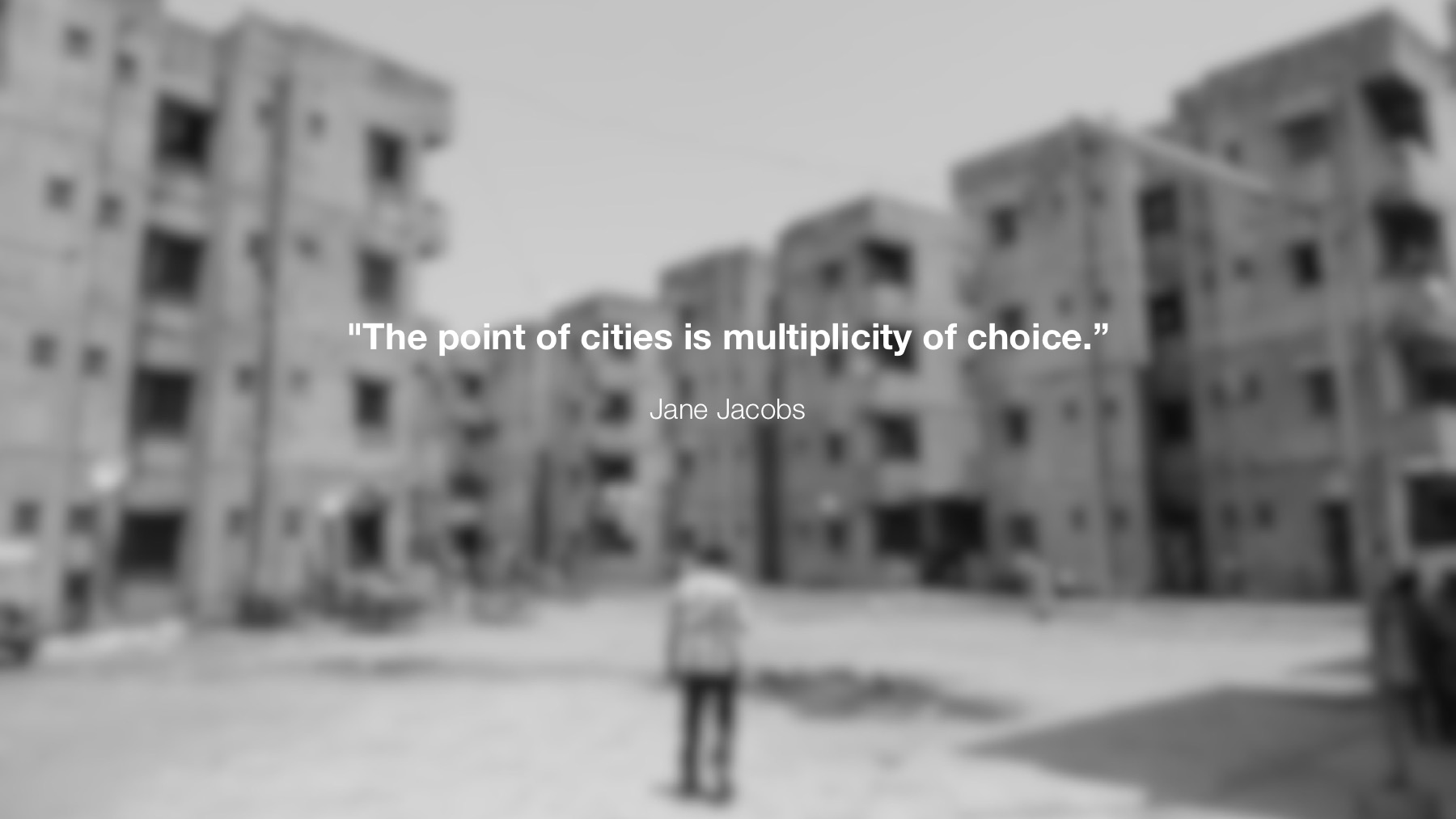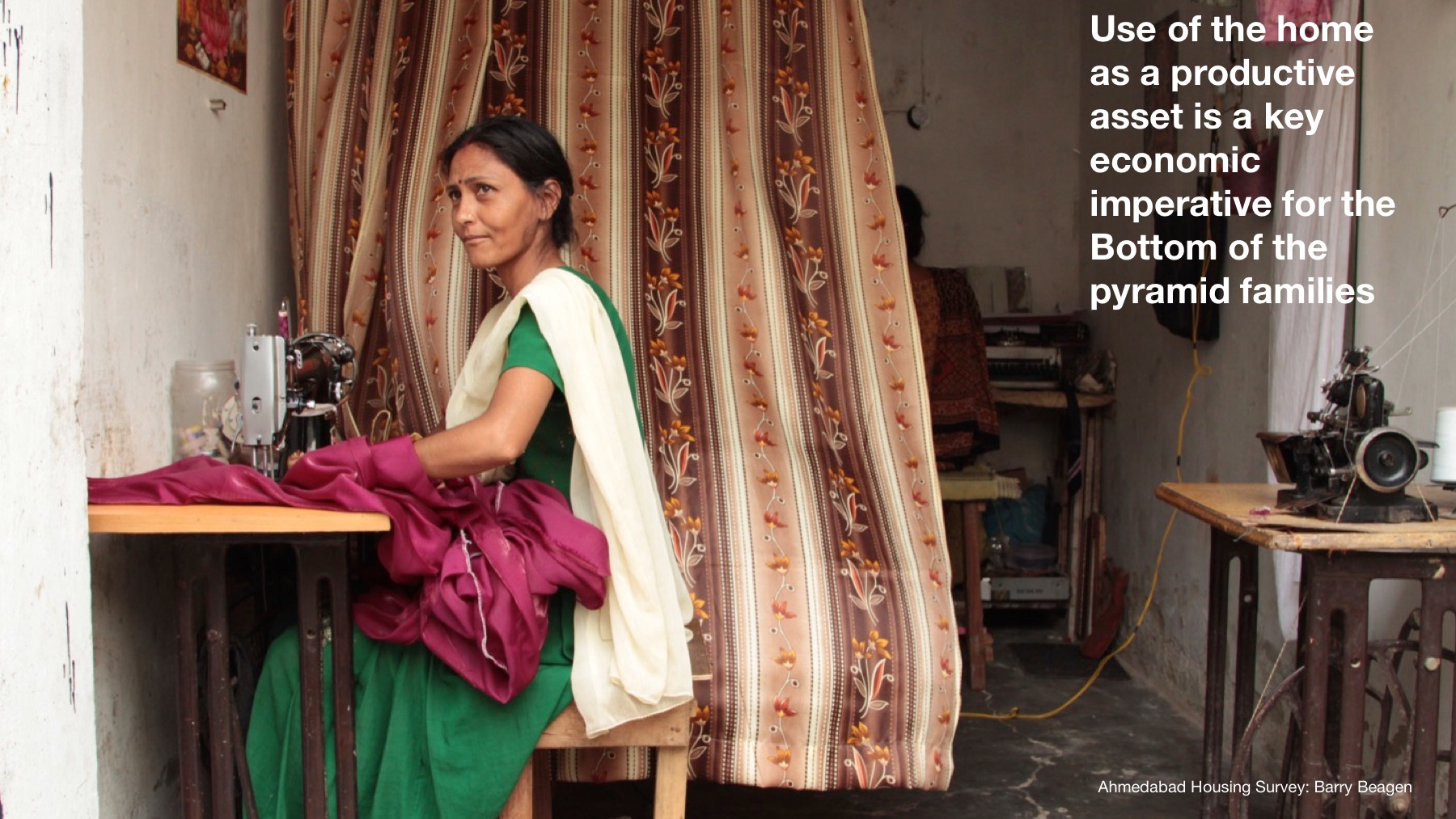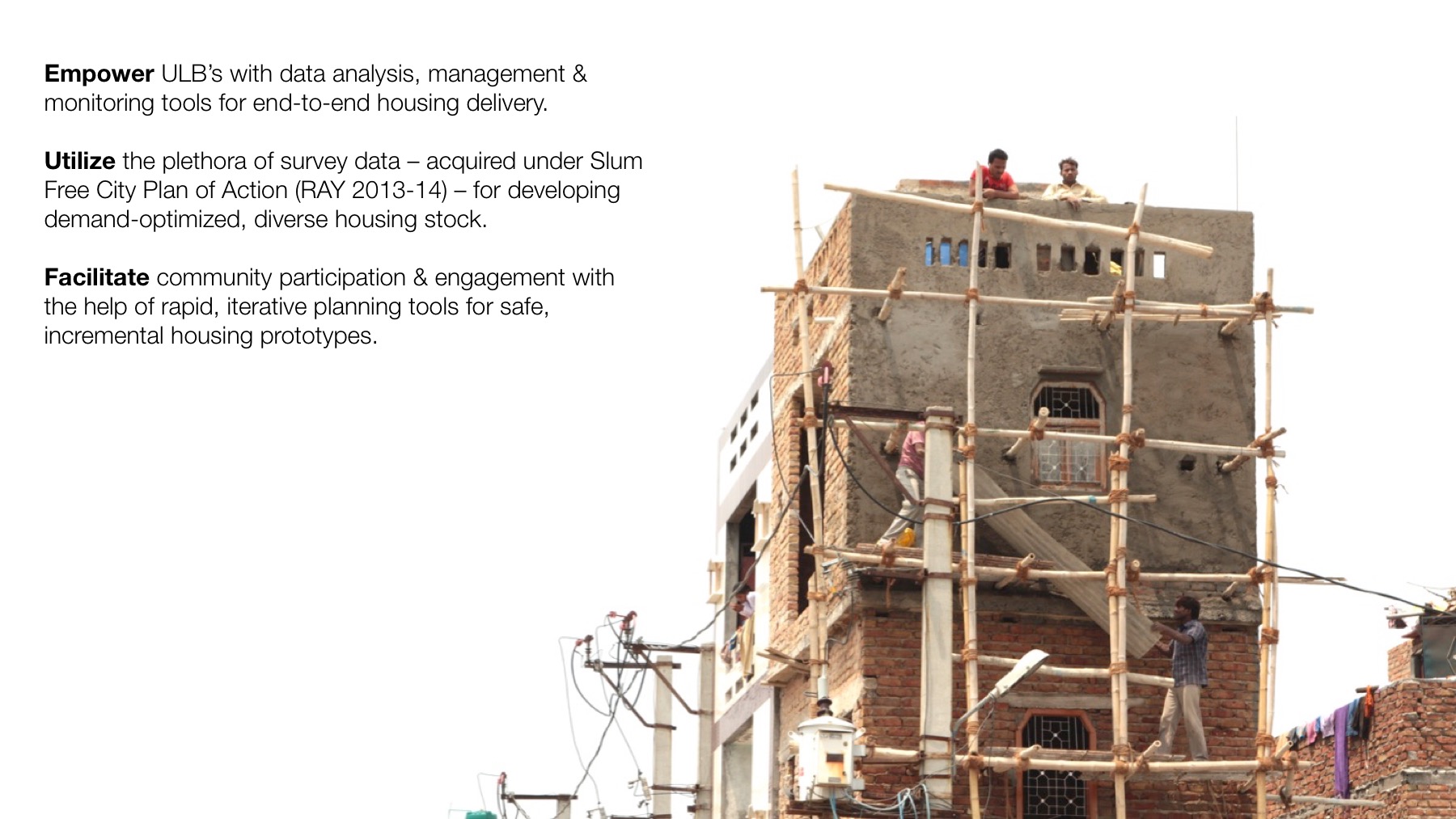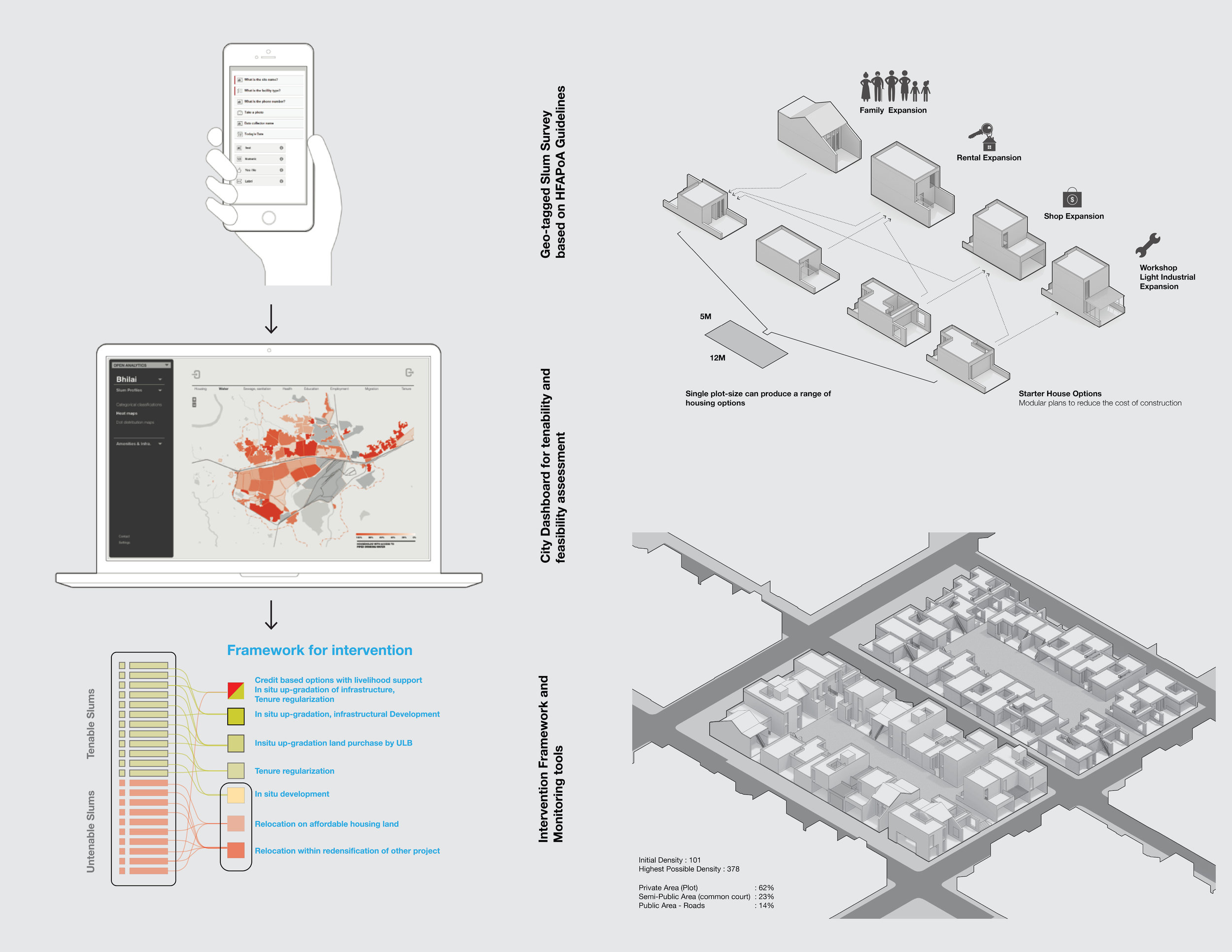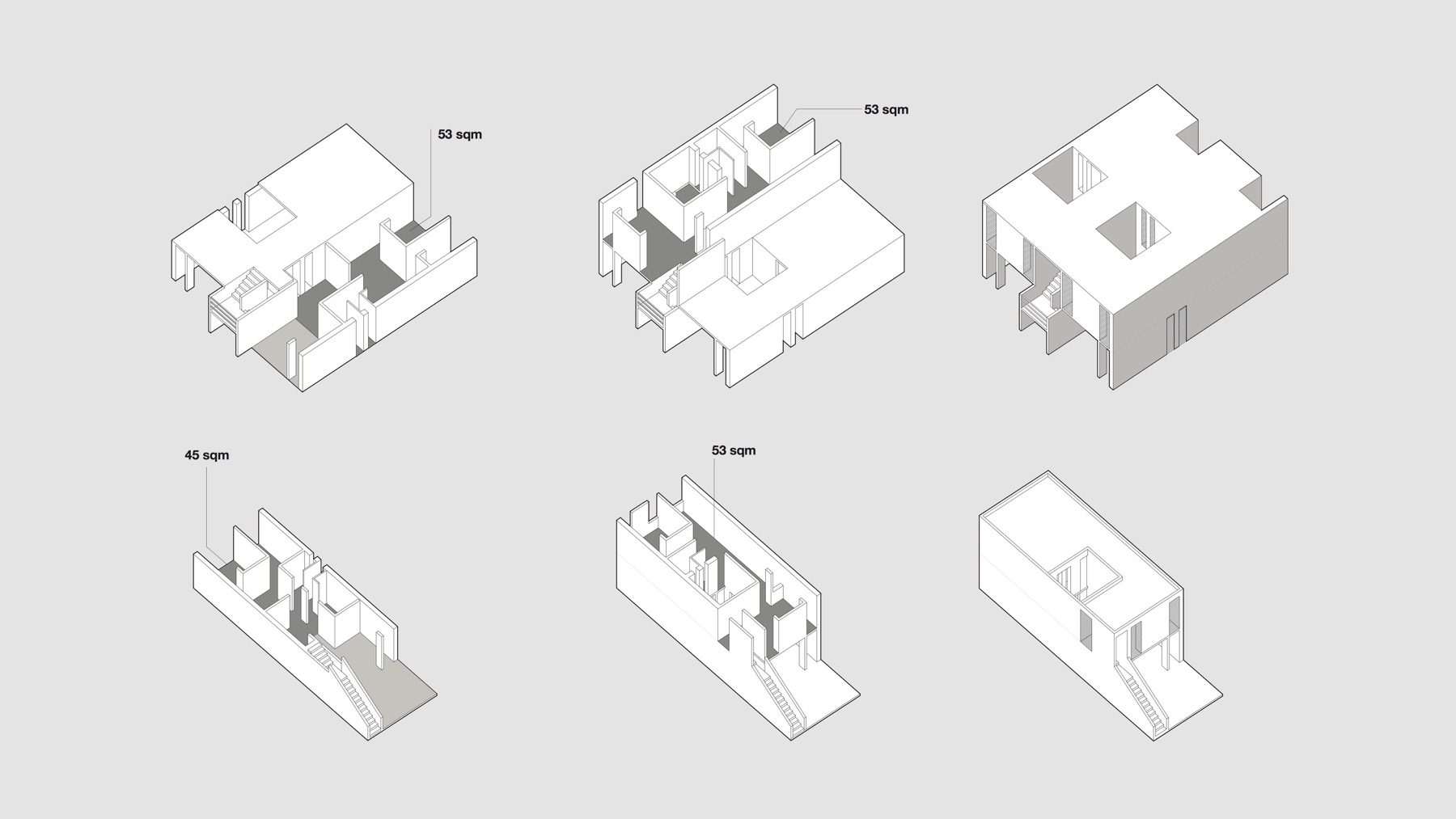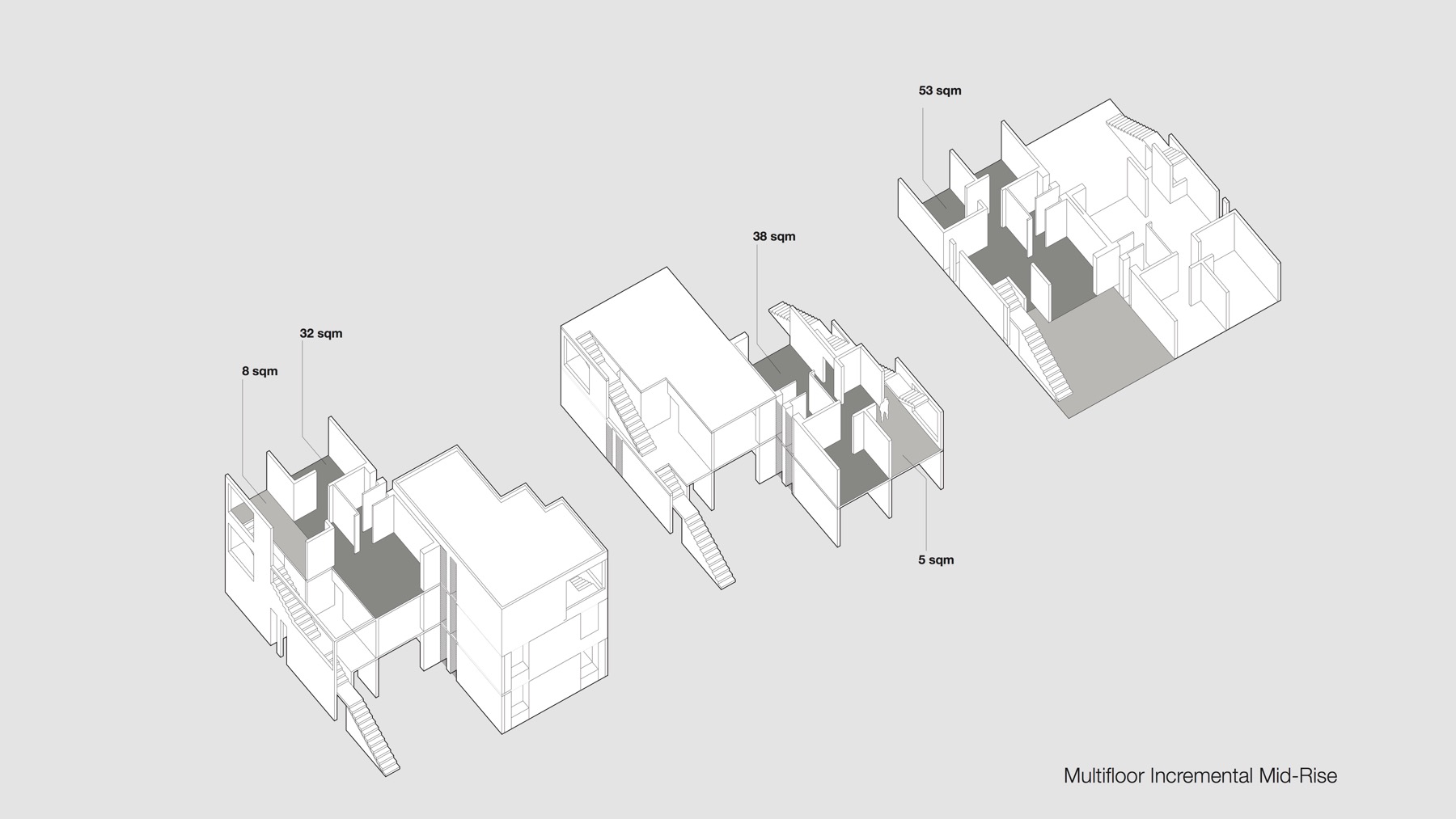WHAT
Housing delivery to the bottom of the pyramid is a key challenge in front of India as the country is witnessing rapid urbanization. One of the fallouts of this exponential and often unplanned growth is the severe housing crisis faced by small and medium sized cities. According to a report by Government of India, the housing shortage was estimated to be 18 to 30 million homes in 2012. This has resulted in the formation of informal settlements, defined as settlements that do not have durable housing, insufficient living area, lack of access to clean water, inadequate sanitation, and insecure tenure. According to 2011 census, nearly every one in six Indian lives in such conditions. With the rapid urbanization, it is projected that the current urban population of India (360 million in 2010) is poised to reach 533 million. Most of these new urban residents will be in the economically weaker section of society.
Housing for All' citywide dashboard
While a targeted user research is required for efficient delivery of any product or service – in the case of affordable housing – its beneficiaries are excluded from the planning & design process; a key reason for the supply side mismatches and is exhibited in the coexistence of vacant housing and slums right next to each other. To bridge the gap of targeted market research and comprehensive citywide understanding of housing demand, We are developing A dashboard as a web interface – which, helps with an easy visualization of the targeted surveys & provides specific inputs to be used as design criteria for affordable housing.
This dashboard also aims to make the process of urban planning transparent, equitable and democratic by incorporating the feedback and rating of different parameters of urban life. The planning mechanism of the Indian cities depends upon the outdated central master-planning approach that is rigid and time consuming; hence typical master-planning exercises and revisions are carried out on the 15 to 30 year intervals. The constantly changing urban landscape of the cities often leapfrogs the intentions of these plans. The dashboard, with its constant feedback will bridge the gap between short term planning to long term vision exercises.
In rapidly developing small and medium-sized cities the planning & design process is rendered inefficient due to the lack of manpower and expertise in local development authorities. As a result, even when targeted surveys are conducted the data is not utilized for optimizing the designs against the demand. To bridge this gap we are developing an early design stage tool to assist urban planners/developers in expediting the processing of inputs from the dashboard & efficiently & economically deliver designs for diverse living spaces. It also addresses the time-consuming, labor-intensive design optimization process of balancing different design priorities of density/Housing sizes/diversity of Units by optimization of a pre-designed set of plot clusters.
Contributors: Miho Mazereeuw, Aditya Barve, Mayank Ojha
Supported by: MIT TATA Center for Technology and Design

